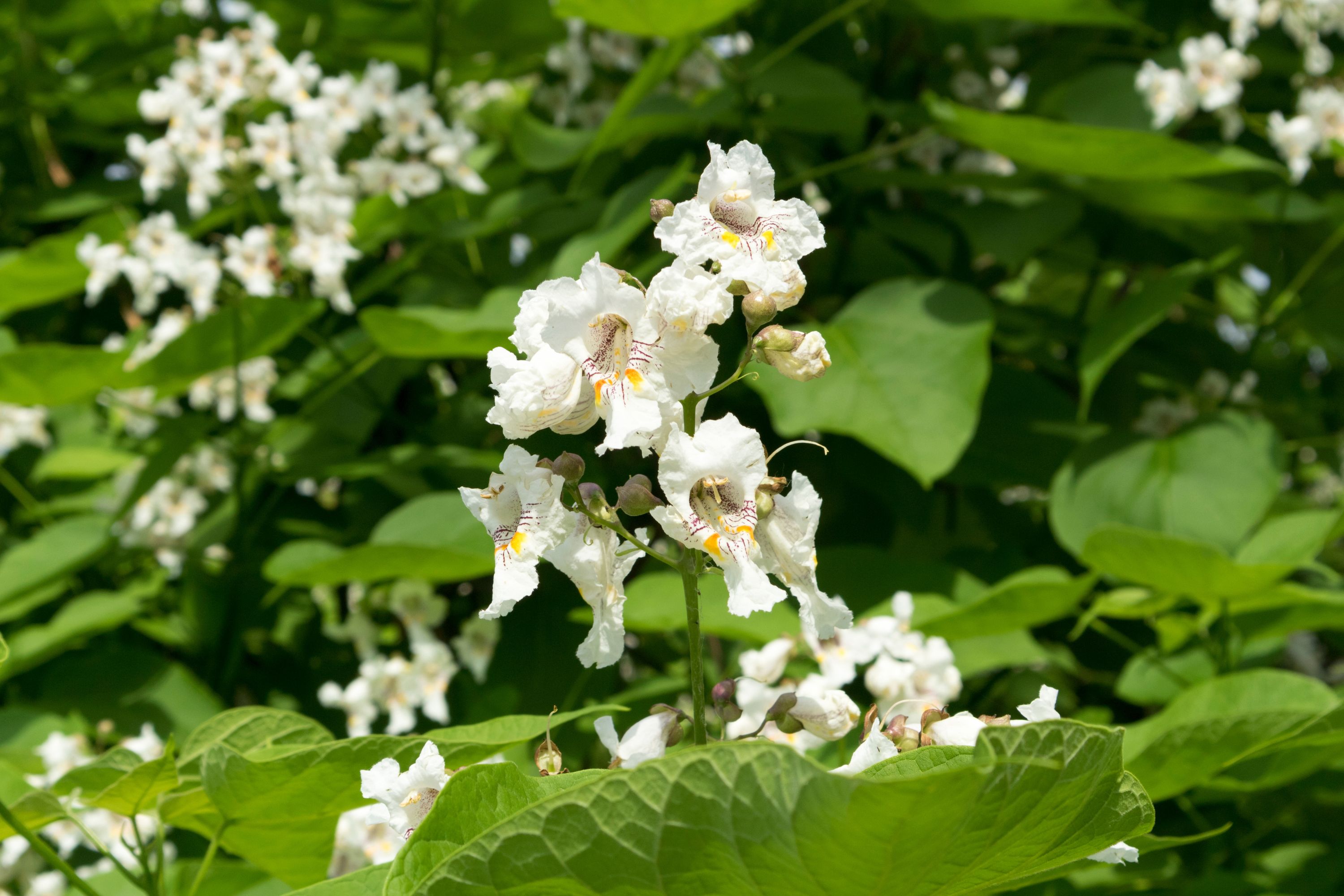Hardy Catalpa
(Catalpa speciosa)

Description
Catalpa speciosa, commonly known as the northern catalpa, hardy catalpa, western catalpa, cigar tree, catawba-tree, or bois chavanon, is a species of Catalpa native to the midwestern United States. It is a medium-sized, deciduous tree growing to 15–30 meters tall and 12 meters wide. It has a trunk up to 1 m diameter, with brown to gray bark maturing into hard plates or ridges. The leaves are deciduous, opposite (or whorled), large, heart shaped, 20–30 cm long and 15–20 cm broad, pointed at the tip and softly hairy beneath. The leaves generally do not color in autumn before falling, instead, they either fall abruptly after the first hard freeze, or turn a slightly yellow-brown before dropping off. The catalpa tree is the last tree to grow leaves in the spring. The winter twigs of northern catalpa are like those of few other trees, having sunken leaf scars that resemble suction cups. Their whorled arrangement (three scars per node) around the twigs is another diagnostic. The flowers are 3–6 cm across, trumpet shaped, white with yellow stripes and purple spots inside; they grow in panicles of 10-30. The fruit is a long, thin legume-like capsule, 20–40 cm long and 10–12 mm diameter; it often stays attached to tree during winter (and can be mistaken for brown icicles). The pod contains numerous flat, light brown seeds with two papery wings. It is closely related to southern catalpa, and can be distinguished by the flowering panicles, which bear a smaller number of larger flowers, and the slightly broader seed pods. Catalpa speciosa was originally thought to be native only to a small area of the midwestern United States near the confluence of the Mississippi and Ohio Rivers. However, in 1976, investigation of an archeological site of an island in West Virginia's portion of the Ohio River revealed Catalpa speciosa to be present on the island around the period of 1500-1700 CE. This suggests that Catalpa speciosa may have experienced a decline in range before European settlement. Today, its range has widely expanded east of the Rocky Mountains outside of its restricted pre-settlement location, further obscuring its true native range.
Taxonomic tree:







